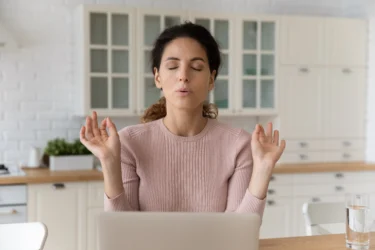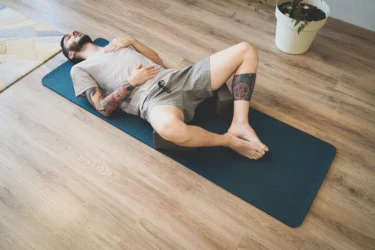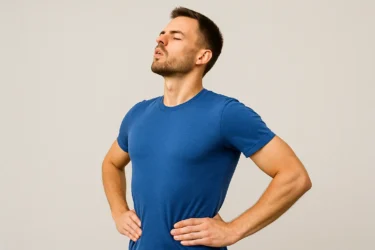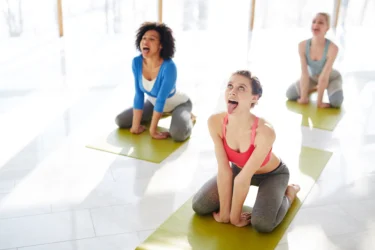6 Simple Exercises to Improve Your Lung Health
By Dr. Himani Bisht +2 more

Get,

to manage your symptom
Get your,


4 Cr+ families
benefitted

OTP sent to 9988776655



You’ve successfully subscribed to receive
doctor-approved tips on
Whatsapp

Get ready to feel your best.

Hi There,
Download the PharmEasy App now!!


Register to Avail the Offer
Send OTPBy continuing, you agree with our Privacy Policy and Terms and Conditions

Hi There,
Sign up on PharmEasy now!!
Trusted by 4 crore+ families

OTP sent to 9988776655



You have unlocked 25% off on medicines




Code: NU25

Comments


Leave your comment here
By Dr. Himani Bisht +2 more
Table of Contents
When we are born, the very first thing we do is breathe! Breathing, comprising of inspiration (inhale) and expiration (exhale), feeds oxygen to every cell in the body and expels out waste carbon dioxide. And it is your lungs that are mainly responsible for this exchange of air, crucial for life. However, despite being a crucial body part, we don’t really work on keeping our lungs healthy unless we experience breathing problems.
As we age, the amount of air our lungs can hold, known as the lung capacity, decreases. Smoking, pollution, and other health problems such as asthma or chronic obstructive pulmonary disease (COPD) can also affect this and lead to breathing difficulties. Thus, it’s important to take care of your lungs from the beginning to help them function well.

In this blog, we will discuss some basic exercises that you can incorporate in your daily routine to improve your lung health.
Before we move onto the exercises, let’s look at the mechanics of breathing.
The diaphragm is a group of muscles attached to the bottom of your lungs and is the main apparatus that controls breathing. When it contracts (along with other muscles in your lungs and ribs), it moves down and creates space for fresh air(oxygen) to enter the lungs through the airways. Air exchange takes place within the air sacs (alveoli) of the lungs. As the diaphragm relaxes, it forces the used air (carbon dioxide) to be expelled out from lungs. Then this fresh air circulates through the body1.
Diaphragmatic breathing is supposed to be primary way of breathing, but many of us develop a habit of using neck and back muscles, which can limit the amount of air that enters and leaves our lungs.
Though a person is unable to control the amount of oxygen their lung can hold, lung exercises provide ways to help your lungs become more efficient at managing airflow and oxygen levels. Here’s how these can benefit your lungs2,3:
Now let’s have a look at some basic exercises that can help improve your lung health along with its functional capacity.

Pursed-lip breathing exercise is easy and can be done anywhere at any time. Steps to follow for pursed-lip breathing:
This exercise keeps your airway open for longer, which facilitates the airflow into and out of the lungs. These make it easier for the lungs to function and improve the exchange of oxygen and carbon dioxide4,5.This exercise can be beneficial for people who are less physically active and are not using their breathing muscles frequently.

Diaphragmatic breathing is one of the best exercises that use the diaphragm muscles for breathing. It is also known as belly breathing as the stomach rises and falls with each breath. Follow these steps to practice diaphragmatic breathing:
Diaphragm breathing helps strengthen the respiratory muscles and improves lung capacity6.

Stretching the ribs causes chest expansion that helps improve the tone of respiratory muscles and activity and enhances lung function7.

This exercise gives space to your diaphragm to expand and provides strength to the chest muscles.

Any activity that works the abdominal muscles also works the lungs. Studies8 have shown that even simple humming can help improve your respiratory health. It helps enhance sinus ventilation and increases production of nitrous oxide gas in the nose which aids in fighting inflammation. Singing can also help improve lung function by increasing your lung capacity. It forces used air out of the lungs so more fresh air can enter9. Moreover, these are great stressbusters!

There are certain yoga poses that are beneficial for lung health and Simhasana is one. It is a unique pose that requires you to make a sound. The sound created during Simhasana resembles the roaring sound of a lion. To do this:
Yoga poses such as simhasana are found to improve lung capacity and have positive effects on lung function10.
While lung exercises are usually good for your health, if you have a chronic lung disease, always consult your doctor before starting an exercise regime.
Pranayama or breath regulation, another important breathing exercise, can enhance the efficiency of healthy individuals and athletes by enhancing the ventilatory functions of the lungs, especially for those who partake in aerobic-based sports and require efficient lungs to deliver sufficient oxygen uptake.
Dr. M.G. Kartheeka, MBBS, MD(Pediatrics)
Besides their benefits for lung health, these exercises also have a positive impact on several body functions. These are11:
Also Read: Benefits of Balasana (Child’s Pose) and How to Do it By Dr. Ankit Sankhe
Incorporating the right exercises into your routine can significantly boost your lung health, enhancing your breathing capacity, stamina, and overall well-being. But remember, you have to practice these exercises regularly for best results. Also, everybody’s threshold is different and it’s necessary to listen to your body if you feel any discomfort. Consult a doctor if you already have lung problems before incorporating any exercises in your routine.
Disclaimer: The information provided here is for educational/awareness purposes only and is not intended to be a substitute for medical treatment by a healthcare professional and should not be relied upon to diagnose or treat any medical condition. The reader should consult a registered medical practitioner to determine the appropriateness of the information and before consuming any medication. PharmEasy does not provide any guarantee or warranty (express or implied) regarding the accuracy, adequacy, completeness, legality, reliability or usefulness of the information; and disclaims any liability arising thereof.
Comments

Leave your comment...

View all comments(4)
You may also like
Aweosme post man.
Thank you, glad you liked it.
Good article, it would have been better if add images/video for each exercise.
Appreciate your feedback, Thank you.